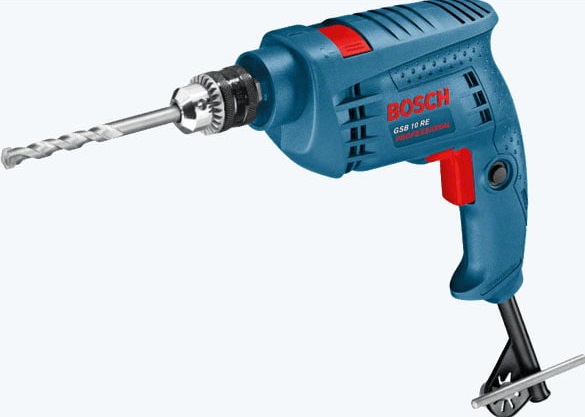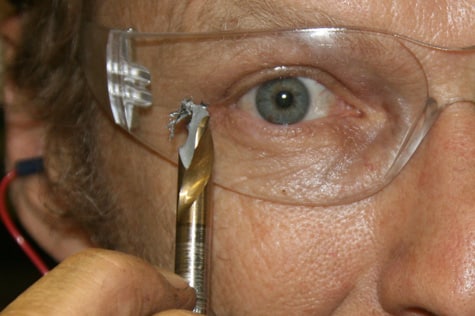Drilling out a tubular lock may initially seem daunting, but it’s a straightforward process with the right tools, knowledge, and skill. Tubular locks are commonly used on vending machines and bicycles and can be tricky to open without the correct key. However, if you need to drill out a tubular lock for any reason, it pays to understand the basics of the process.
In case you face any problem, you should know how to drill out a tubular lock. You must follow the proper techniques and safety precautions to drill out properly. This blog post will guide you through the steps you need to take, from gathering the right tools to executing the job safely and efficiently. So, let’s dive in and learn how to drill out a tubular lock!
Article Summary
Drill Out Tuber Locks: Step By Step Guide
Step 1: First, Make Sure Your Drill Machine Is Working Properly
As we are drilling out a tubular lock, what is the most necessary equipment? Of course, it is the drill machine! Without a drilling machine, we can not proceed with our job. The fast and foremost thing is to check whether the drilling machine is functioning correctly or not. Ensure the drill machine is in good working condition, and check the drill bit.
Step 2: Secure the drill bit with masking tape
When drilling into the tubular lock, it is crucial to secure a ¼-inch depth of the drill bit with masking tape for safety reasons. You need to measure 1/4 inch from the drill bit’s tip, then wrap the masking tape around that distance of 1/4 inch.
To prevent damage to the interior of the vending machine, it is important not to drill too deeply into the tubular lock of the machine.
Step 3: Drill a hole in the lock’s center using the smaller drill bit
Drill into the center of the lock using a ⅛ inch or smaller bit to create a starter hole. Drill as far as possible to a depth of ¼ inch or until the limit of the tape on the drill bit has been reached. When you reach the end of the tape you placed on the drill bit in Step 1, you can stop drilling.
Step 4: Using a larger drill, bore another hole into the first one
In order to make a large hole in the lock, use a ¼ inch drill bit. Begin to drill an additional hole to the previous one that you have already created. Generally, a ¼-inch deep hole is sufficient for unlocking the lock. In some cases, drilling as deep as 1/8 inch is necessary to gain access.
If you cannot unlock the lock, insert a flathead screwdriver into the drilled hole and twist until the casing is removed.
You may also read: How to Drill Out Ignition Lock Cylinder Ford
What You Will Need Before Drilling?
Before beginning this tutorial, collecting the items you need to proceed is essential. Most of the items on the list are easily accessible, as they can be found in any repair tool package.
Collect Drill & Drill Bits
Drill and drill bit equipment are essential for drilling out tubular locks. Drilling out a tubular lock requires precision and accuracy, which can only be achieved with the appropriate drill and drill bit equipment.
There are two main types of power drills: corded and cordless. You can use either one of them for this project. Tubular locks are particularly sturdy, so a drill is often the best way to remove them without damaging the surrounding area.
Corded power drills feature an electrical cord with 110-volt power input, while cordless power drills are equipped with a battery on the handle. The advantage of using a power drill is mainly free-hand movement.

A tubular lock drill bit is ideal for drilling tubular locks on vending machines. This specialized bit is designed to remove the metal casing that shields the lock’s pins, allowing it to be opened. The drill and drill bit equipment allows the user to make small, precise adjustments, which is critical when working on a tubular lock.
You can use a carbide drill bit if you can’t manage a tubular lock drill bit. Apply a ¼-inch drill bit for a larger hole size. You can use a 1/8-inch or smaller bit if you need a smaller size.
Screwdriver (Flathead)
The Flathead Screwdriver is an essential tool for any tubor lock drilling project. Its flat head design makes it easy to insert into the lockset, and its wide variety of sizes means you can find the right fit for any job. It is also ideal for drilling out tubulor locks, as its specialized tip is designed to reach into the tight spaces between the pins and tumblers.

Its ergonomic handle increases comfort and control while you work. When reaching screws in hard-to-reach places, a long flathead screwdriver can be beneficial. Use a short screwdriver if it fits into the hole and gets to the locking mechanism. The Flathead Screwdriver’s reliable performance is an invaluable tool for any tubulor lock drilling project.
Safety Glass
Safety glass and gloves are essential components for any drilling operation. They play a pivotal role in ensuring the workers’ safety and the environment’s protection. The safety glass allows a clear view of the surrounding area despite the dust, debris, and other materials generated during drilling operations.

Additionally, you must wear comfortable gloves to secure your hands and comfort while drilling. When selecting the appropriate safety glasses, ensure adequate ventilation for maximum comfort during drilling.
Ruler
A ruler is an important tool for drilling as it helps to ensure accuracy and precision in the drilling process. Using a ruler, the drill operator can measure the exact depth of a hole and adjust the drill bit accordingly. The ruler can also measure the distance between two holes, allowing the operator to create perfectly spaced holes.

Additionally, a ruler is beneficial for measuring hole diameters and ensuring that the hole diameter is consistent. In order to ensure uniformity and consistency, drill operators use rulers. The drilling process’s accuracy and precision depend on using a ruler.
Masking Tape

The use of masking tape is recommended when drilling a tubular lock attached to a vending machine. When selecting a masking tape for your drill bit, select a visible colour that can be easily wrapped around the bit. It will serve as a guide to prevent damage to the machine’s internal components due to deep drilling.
What Is The Cost Of Lock & Drilling Out?
The average cost of a lock ranges between $15 and $40. However, this cost may increase depending on the type of lock and installation requirements. If the installation requires drilling, an additional fee of $95 – $150 may be applied to the total cost.
For those who have already purchased the lock, the cost to install the lock typically ranges from $40 – $150. Certain locks may require specialized installation services that incur an additional charge.
However, If you have the necessary tools and knowledge, you can fix the lock yourself.
Tubular Cam Locks: How To Remove Them?
Cam locks utilize a keyhole with a long tailpiece, referred to as a cam, for locking mechanisms. Similar to a tubular lock, a tubular cam lock is often used in cabinets and drawers. As such, drilling out a tubular cam lock is similar to that of a tubular lock, albeit with a few minor differences.
Bottom Line
In conclusion, it is not difficult to drill out a tubular lock if you are an expert with patience and precision. With the right tools and a steady hand, it is possible to drill the lock without damaging the underlying components.
It is important to remember to take safety precautions while drilling. And to be aware that drilling out a tubular lock will render it unusable. With the right tools and practice, drilling out a tubular lock can be done in no time.